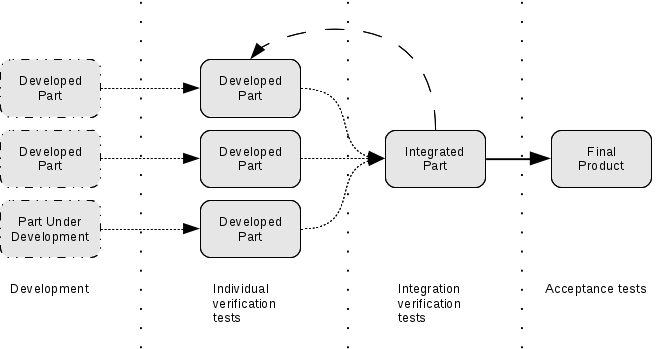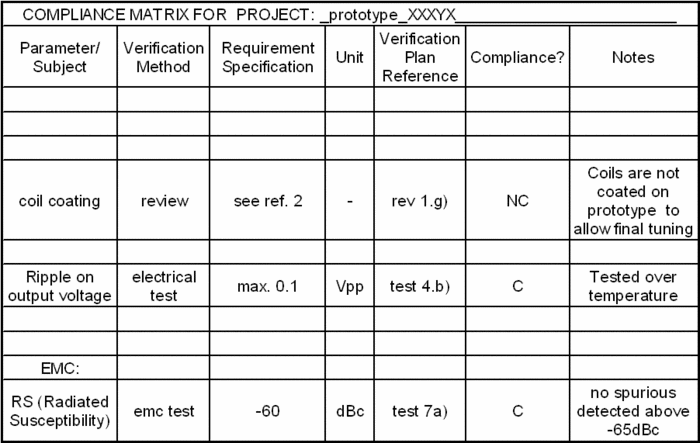Difference between revisions of "Verification Planning"
(New figure) |
(Modernised a bit) |
||
| Line 17: | Line 17: | ||
'''Ingredients''' | '''Ingredients''' | ||
| − | * | + | * Development strategy |
| − | * | + | * Test specifications |
| − | * | + | * Verification and acceptance specifications |
* Risk management documents | * Risk management documents | ||
| Line 32: | Line 32: | ||
When planning the verification activities, you need to: | When planning the verification activities, you need to: | ||
| − | * | + | * Base the extent of the verification activities on the development strategy and the verification tests |
| − | * | + | * Decide if special activities/tests are required due to the customer's implicit safety requirements or government regulations. |
| − | + | * Decide when, where and by whom the different verification disciplines should be performed according to the product verification specification (inspections, reviews and tests). | |
| − | * | + | ** The order of the tests are important because some tests might influence destructively on the system if not passed. |
| − | * | + | * Book in-house or out-of-house test facilities. |
| − | * | + | * Make a detailed test and verification plan for the present timebox and a rough plan for the rest of the timeboxes until project completion. |
| − | * | + | * Construct a compliance matrix (a simple table) in which you easily can state compliance (or not) to all the specific requirements one by one during your subsequent verification activities. |
A typical test sequence for the final verification of the system is shown in the figure below: | A typical test sequence for the final verification of the system is shown in the figure below: | ||
Revision as of 10:10, 19 December 2012
What
Verification Planning
- to plan when, where, by whom and to what extent the developed product should be verified in each timebox
How
The dish
Verification Planning
Ingredients
- Development strategy
- Test specifications
- Verification and acceptance specifications
- Risk management documents
Output Artefacts
Test and verification plan
Compliance matrix
Process
When planning the verification activities, you need to:
- Base the extent of the verification activities on the development strategy and the verification tests
- Decide if special activities/tests are required due to the customer's implicit safety requirements or government regulations.
- Decide when, where and by whom the different verification disciplines should be performed according to the product verification specification (inspections, reviews and tests).
- The order of the tests are important because some tests might influence destructively on the system if not passed.
- Book in-house or out-of-house test facilities.
- Make a detailed test and verification plan for the present timebox and a rough plan for the rest of the timeboxes until project completion.
- Construct a compliance matrix (a simple table) in which you easily can state compliance (or not) to all the specific requirements one by one during your subsequent verification activities.
A typical test sequence for the final verification of the system is shown in the figure below:
Why
In each timebox, during and after the implementation of the product features, it is mandatory to verify that the requirements stated in the Product Accept Specifications document are met. Otherwise, there is no guarantee or documentation that the product meets the customer's requirements.
The degree of verification depends on what level of completion the product has. During the implementation of the product, the developer will typically verify important parameters or features several times in each timebox. If the product is a combination of more subsystems (software, hardware and/or mechanics), this continuous verification might be done separately for each subsystem.
After the integration of the subsystems, the developed system should be tested as one unit.
The degree of the verification is usually large during the final timebox, but much smaller during the earlier timeboxes.
Example
Examples of a few lines in the Compliance matrix:
Deployment Planning might be the next natural step to take.


